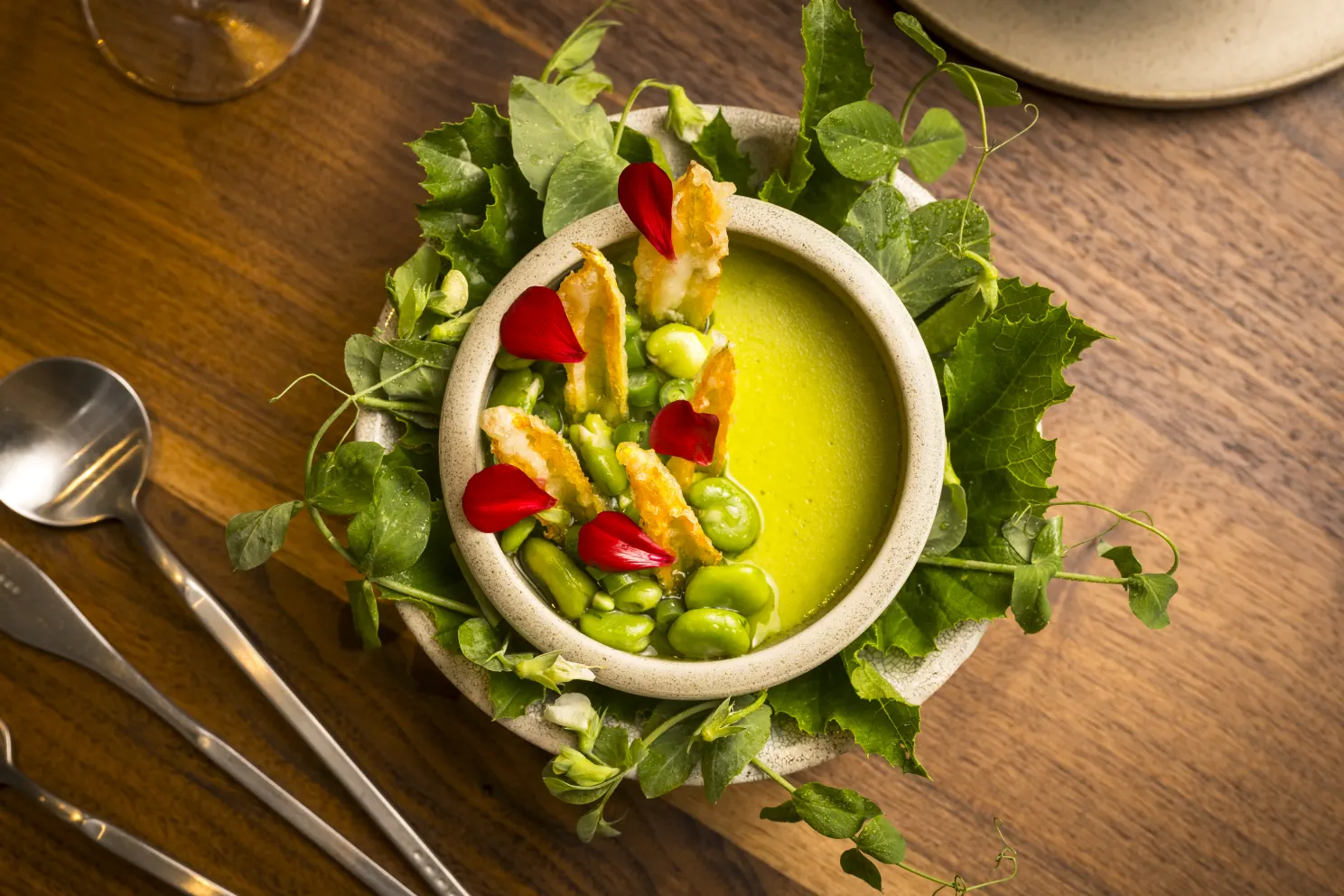Crudités extremes
- rosemary
- Mar 20, 2024
- 5 min read
"the main object of an hors-d'œuvre is to provide something beautifully fresh-looking which will at the same time arouse your appetite and put you in good spirits." Elizabeth David
I came across the photograph on the right just the other day by happenstance - click on it to enlarge it - and you will see that highly artificial and sumptuous display - almost a sculpture - is entirely made from vegetables. It's a work of art. I don't know whether anyone was actually supposed to eat it. It's the work of a French chef named Yann Bernard Lejard who works in New York. I think there was an exhibition but the article is behind a firewall so I can't really say. It did imply, however, that this private chef, does indeed make such things for his clients. The ultra rich no doubt. Food morphing into art I guess - and I should remember it when I eventually come to Art in the Food Curriculum.

And then just yesterday David was given a free copy of House and Garden in Woolworths and there in the brief recipe section was this double page spread (apologies for the poor scan), of what they called Roasted green capsicum with charred crudités. Such a coincidence. Obviously I was meant to talk about crudités. It clearly demonstrates the modern approach as well - a dip and 'charred' not to mention the fashionably crispy bread - a kind of lavosh? And because charred, not quite crudités.
The photograph on the left at the top of the page represents probably my first encounter with the French concept of crudités, even though at that time, now that I think of it, British salads were pretty much a dish of crudités unless you dolloped on some Heinz salad cream or mayonnaise from a bottle. Otherwise it was all pretty much raw, undressed vegetables - usually, lettuce, tomatoes and cucumber. And I shouldn't forget the raw peas that we ate as we podded them.

But back to the French notion of crudités. Those radishes were a frequent appetiser in my French exchange homes. I was familiar with radishes of course. I had even grown them as a small child, and I certainly ate them. I loved the crunchy pepperiness of them. But here in France they dabbed them with that glorious French butter and then dipped them in sea salt. So different, so delicious. It didn't quite work back home of course, because we didn't have the same butter or the same salt, but it's certainly repeatable now. Well almost. The butter is still hard to get hold of.
Another thing this made me think was that British food, so mostly unadorned by fancy sauces and dips, was in fact completely in line with the French concept of crudités, which so often was served at the start of a meal - lunch more likely than dinner I think.

Maybe we can do something as simple as this today, and still think of it as fashionable but we are probably more likely to take it just one step further and make something like these very pretty open, or closed, sandwiches. Just two more ingredients - quality baguette plus a herb of some kind - watercress?
And, of course, as modern foodies will delight in, it all depends on the quality of the ingredients. Although, of course, as always, this kind of unadorned delight stems from the food of the poor.

Take for example this from Richard Olney, talking about raw broad beans - fava beans as they are now more fashionably called:
"At the raw-eating stage, the pods, warm green, velvety and firm to the touch, are about 15cm long and the beans are the size of a little fingernail. A platter heaped high with unshelled broad beans is placed at table and everyone goes to work, shelling. They are eaten à la croque-au-sel, each bean first dipped in salt (it is sometimes necessary to moisten it on the tip of the tongue to make the salt cling), and often accompanied with slices of raw ham. ... Rustic bread and cold, unsalted unpasteurised butter complete the perfection."
And yes the picture doesn't quite equate, but it was the nearest I could find. In Italy they use olive oil and Parmesan rather than butter and salt. Same concept though.

The French are really into crudités as an hors d'œuvre. Almost every small local restaurant will have it as an option. Sometimes as a buffet from which you pick and choose, sometimes something as simple as this plate of raw vegetables:
"a large colourful still life of seasonal vegetables, whole and raw when possible, peeled, sliced, grated, or chopped if necessary, garnished with peeled hard-boiled eggs and bouquets of fresh herbs - basil, dill, chervil, tarragon, hyssop, lemon thyme, leaf thyme (parsley and chives should be chopped and served in dishes apart). Oil, vinegar, lemon halves, a pitcher of heavy cream, mustard, and seasonings are served apart, and each guest fabricates his own salad or series of salads, seasoned to personal taste or whim." Richard Olney
These days those sides of oil, vinegar, etc. would be replace by some kind of beautiful dip.
And what is Le grand aioli if not a big platter of crudités? Well one step removed I suppose the components are often lightly cooked served with a dish of very garlicky aioli. Below three examples - on the left from Robert Carrier and the version served by his beloved Fifine - the white fish is salt cod; a modern but 'authentic' version in which the vegetables look less cooked, and another even more modern version which actually looks closer to true crudités plus prawns.
Aioli is of course a dip, and these days most classy restaurant dishes of crudités are almost always served with a dip, and if not a dip, then decorative dribbles of dressing. Some are relatively simple, some very fancy. Below - a selection from here and there - the first three from Visions Gourmands which has more and which represents the extreme - almost as extreme as the photo at the top of the page, but on a smaller scale; plus one from one of Ottolenghi's restaurants in London and one from Ballarat!
It seems that crudités are in fashion again and the higher the price of the restaurant, the less you get, although I'm sure the produce will be of the finest quality and the sauces, and dips divine. Not to mention that it will look beautiful.
To finish with two classics of the basic crudité selection - carrot salad, and celeriac remoulade, neither of which are quite raw - they are dressed but not cooked.
The French adore these two dishes, and there are many, many commercial versions available in the supermarket. But really they are pretty simple, and surprisingly delicious. Just remember to grate your carrots very finely and not to make your remoulade too runny. There are endless recipes on the net.
I suppose I'm a little late in the year to talk about such summery food, although those of you over there in the UK will just be looking forward to the first spring vegetables. But even in France it isn't summer all year, and crudités are still a feature of the restaurant menu and the home kitchen. In winter the brassicas come into their own - cabbage, broccoli and so on. Radishes and carrots are always around, as is lettuce. Maybe pumpkin, parsnips and so on could be treated like the carrot and celeriac. Supplement with a spicy dip, some crusty bread and hard-boiled eggs. Maybe some prosciutto and/or salami - and there's dinner. Or lunch.

























The cruditee look yumee and must be good for my tumee, not to mention my old ticker!